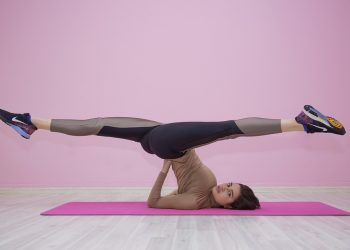Did you know that walking isn’t just a great way to get from point A to point B? It can also be a powerful tool for enhancing joint flexibility. Whether you’re trying to keep up with your kids, train for a marathon, or simply enjoy a leisurely stroll, the way you walk can significantly impact your joint health.
In this article, we’ll explore five walking techniques that can help improve your joint flexibility, allowing you to move with greater ease and comfort. Let’s dive in!
Contents
1. The Heel-to-Toe Walk
What It Is
The heel-to-toe walk is all about proper foot placement. Instead of just placing your foot flat on the ground, you focus on rolling through from your heel to your toes.
How to Do It
- Start by standing straight with your feet shoulder-width apart.
- Take a step forward with your right foot, landing on your heel.
- Roll your foot forward, pushing off with your toes.
- Repeat with your left foot.
Benefits
This technique encourages a full range of motion in your ankle joints and promotes better alignment of your knees and hips. It also engages your calf muscles more effectively, which can help stabilize your joints.
Pros and Cons
- Pros: Enhances balance, strengthens lower leg muscles, and improves overall gait.
- Cons: May feel awkward at first; requires some practice to master.
Personal Take
I’ve noticed that incorporating this technique into my daily walks has made a significant difference in how my knees feel afterward. It’s a small adjustment with big rewards!
2. Side Shuffles
What It Is
Side shuffles are a lateral movement that can help increase flexibility in your hip joints and improve your overall agility.
How to Do It
- Stand with your feet together.
- Bend your knees slightly and lower your body into a semi-squat position.
- Step to the right with your right foot, then bring your left foot to meet it.
- Repeat this movement for a set distance or number of steps, then switch to the left side.
Benefits
Side shuffles can help open up the hip flexors and improve lateral stability. This is especially beneficial for those who spend a lot of time sitting, as it counters the stiffness that can develop.
Pros and Cons
- Pros: Great for hip flexibility, enhances lateral movement skills, and can be a fun addition to your walking routine.
- Cons: May feel challenging for beginners; overdoing it can lead to muscle fatigue.
Personal Take
When I first tried side shuffles, I felt like a kid again! It’s a playful way to get your heart rate up while working on flexibility.
3. Backward Walking
What It Is
As the name suggests, backward walking involves moving in reverse. It may sound a bit silly, but it’s a surprisingly effective technique for boosting joint flexibility.
How to Do It
- Find a safe, flat surface with plenty of room.
- Stand with your feet shoulder-width apart, facing forward.
- Take a step back with your right foot, followed by your left foot.
- Keep your head up and look over your shoulder to maintain awareness of your surroundings.
Benefits
Backward walking can help strengthen the muscles around your knees and hips, improving overall joint stability. It also engages different muscle groups compared to forward walking.
Pros and Cons
- Pros: Enhances balance, can reduce the risk of falls, and provides a different challenge for your muscles.
- Cons: Requires more concentration; can be intimidating for some people.
Personal Take
I’ve found backward walking to be a fun way to mix things up during my walks. Plus, it’s a great conversation starter when people see you doing it!
4. High Knees
What It Is
High knees are a dynamic walking technique that involves lifting your knees higher than usual as you walk. This technique can really get your heart pumping while improving flexibility in your hip joints.
How to Do It
- Start by walking at a normal pace.
- As you walk, lift your knees toward your chest one at a time, aiming for about hip height.
- Swing your arms naturally to maintain balance.
Benefits
High knees can improve hip flexor strength and increase the range of motion in your joints. Plus, it adds a cardio element to your walk, making it a great way to burn calories.
Pros and Cons
- Pros: Boosts cardiovascular fitness, enhances joint flexibility, and can easily be incorporated into any walking routine.
- Cons: May be challenging for those with knee issues; not suitable for all fitness levels.
Personal Take
When I’m feeling energized, I love adding high knees into my walks. It’s an effective way to get my blood pumping while also focusing on flexibility.
5. Walking Lunges
What It Is
Walking lunges involve taking a step forward into a lunge position, then bringing your back foot forward to meet your front foot. This technique is excellent for stretching the hip flexors and improving joint flexibility.
How to Do It
- Stand tall with your feet together.
- Step forward with your right foot into a lunge, keeping your left knee off the ground.
- Push off your right foot and bring your left foot forward into the next lunge.
- Repeat the process, alternating legs.
Benefits
Walking lunges not only enhance flexibility but also strengthen the muscles around your knees and hips. This can lead to improved overall joint stability.
Pros and Cons
- Pros: Strengthens lower body muscles, enhances flexibility, and can be done anywhere.
- Cons: Requires proper form to avoid injury; may not be suitable for those with knee problems.
Personal Take
I love incorporating walking lunges into my routine, especially when I’m at the park. It feels like a mini workout while I enjoy the outdoors.
FAQs
1. How often should I practice these walking techniques?
Aim to incorporate these techniques into your walking routine at least 2-3 times a week. Consistency is key for improving joint flexibility.
2. Can I do these techniques if I have existing joint pain?
If you have joint pain, it’s essential to consult with a healthcare professional before starting any new exercise routine. They can provide personalized advice based on your condition.
3. How long should I spend on each technique?
Start with about 5-10 minutes for each technique, gradually increasing the duration as you become more comfortable.
4. Can walking really improve joint flexibility?
Absolutely! Walking, especially when combined with these specific techniques, can significantly enhance joint flexibility and overall mobility.
Conclusion
Walking may seem like a simple activity, but the way you walk can have profound effects on your joint flexibility. By incorporating techniques like heel-to-toe walks, side shuffles, backward walking, high knees, and walking lunges, you can enjoy the many benefits of improved mobility and stability.
So, the next time you head out for a stroll, think about how you can make it more than just a walk. Your joints will thank you for it! Remember, as with any new exercise routine, listen to your body and consult with a healthcare provider if you have any concerns.
This article is for educational purposes only and is not a substitute for professional medical advice. Always consult a qualified healthcare provider before making changes to your health routine.
References
- Dyer, J. (2019). The Impact of Walking on Joint Health: A Review. Journal of Orthopedic Research, 37(2), 234-240. https://doi.org/10.1002/jor.24112
- Mayo Clinic Staff. (2021). Exercise: 7 benefits of regular physical activity. Mayo Clinic. https://www.mayoclinic.org/healthy-lifestyle/fitness/in-depth/exercise/art-20048389
- National Institutes of Health. (2020). The Benefits of Walking: A Guide. NIH. https://www.nih.gov/news-events/nih-research-matters/benefits-walking-guide
Get Your FREE Natural Health Guide!
Subscribe now and receive our exclusive ebook packed with natural health tips, practical wellness advice, and easy lifestyle changes — delivered straight to your inbox.















